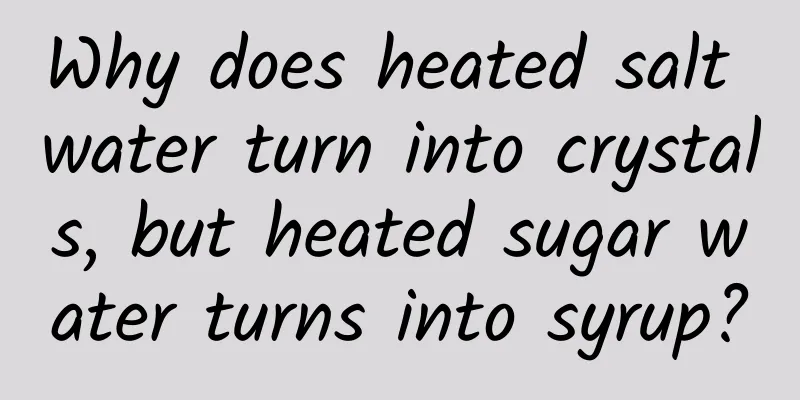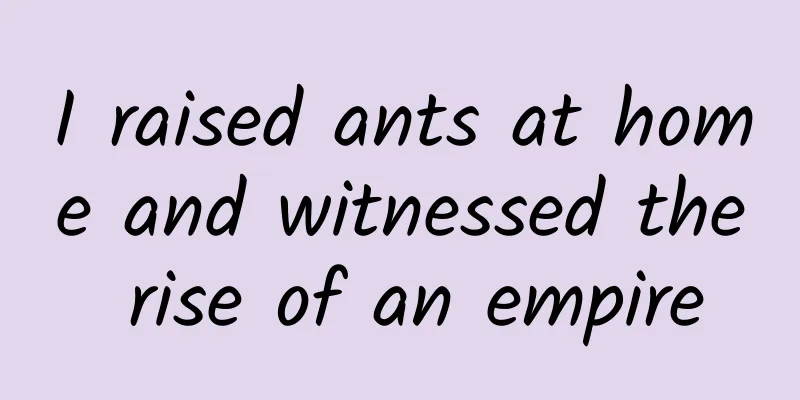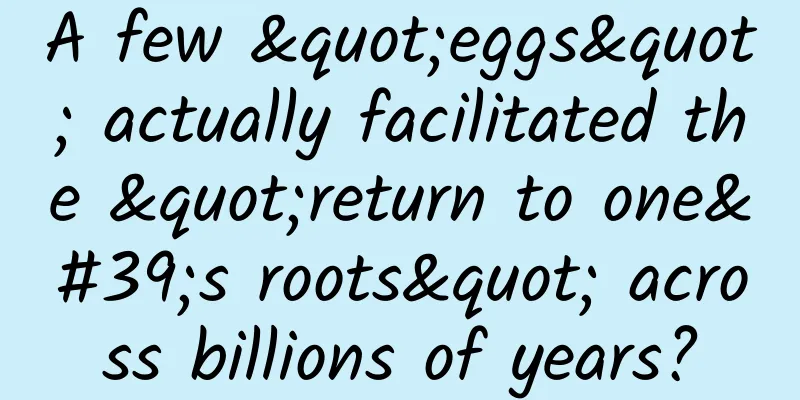Why does heated salt water turn into crystals, but heated sugar water turns into syrup?

|
This is a very interesting question, involving the principles of many disciplines such as organic chemistry, thermodynamics, and food science. Sugar, whether it is sucrose, fructose, or glucose, the most common substances in our daily lives, has a very complicated crystallization process. The main reason is that sugar is a polyhydroxy structure . Part 1 Thermodynamics of crystallization process The crystallization process can be roughly divided into two steps: the first step is the formation of crystal nuclei, and the second step is the growth of crystal nuclei. From thermodynamics, we know that the process of free energy reduction is a spontaneous process . Therefore, under certain conditions, whether it should crystallize or dissolve, we can just compare the free energy of the crystal with the free energy of the solute in the solution. When the solution concentration is relatively low (not reaching saturation concentration), the free energy of the crystal is higher than the free energy of the solution. Therefore, the crystal spontaneously changes to the solution, that is, the crystal is constantly dissolving. When the solution concentration is relatively high (supersaturated concentration), the free energy of the solution is higher than the free energy of the crystal, so the solution spontaneously changes toward the crystal, that is, the solute crystallizes continuously; When phase equilibrium is reached (i.e., when the solution is saturated), the free energies of the crystal and the solution are just equal. At this time, neither crystals are formed nor dissolved. However, this is only a case of thermodynamic equilibrium . The actual process is not that simple. The above criteria only describe the changes between the solution and large crystals (for example, millimeter-sized). In addition to the above free energy changes, the actual crystallization process also includes another part: surface energy . When a crystal is generated from nothing, a new surface is formed: the interface between the crystal and the liquid phase. As we know, all interfaces have surface energy. Therefore, this surface will have an additional free energy. We know that under supersaturated conditions, the formation of crystals leads to a decrease in free energy , which is proportional to the volume of the generated crystals, while the formation of new surfaces leads to an increase in free energy , which is proportional to the surface area. In the case of supersaturation, at the initial moment of crystal formation, the crystal particles formed are very small (called crystal nuclei ). At this time, the free energy is an increasing process, which is very easy to understand, because when the volume is small, the specific surface area tends to infinity. When the volume of the crystal nucleus increases to a certain extent, crystallization becomes a process of reducing free energy. This is easy to understand because when the volume is large, the specific surface area tends to zero. Therefore, the formation of crystal nuclei is an anti-spontaneous process at first - crystal nuclei will not form spontaneously, and even if a small crystal nucleus is occasionally generated, it will quickly dissolve. However, once a crystal nucleus exceeding a certain size is formed, it will grow spontaneously, so it will continue to grow and enter the fast lane of crystal growth. Therefore, the process of crystallization needs to cross an "energy barrier" and must overcome the increase in free energy to form a crystal nucleus of a certain size before crystallization can continue. It is like a reservoir blocked by a dam on the top of a mountain. Everyone knows that water flows to lower places and the water in the valley is the most stable. However, the water in the reservoir must cross the dam to flow down, which requires a "wave crest" of a certain height. If the wave crest is higher than the dam, it will continue to flow down. If it is not higher than the dam, the water will return to the reservoir. But this analogy is a little inappropriate. Because a dam always needs constant waves to break over, but crystallization is different. As long as a crystal nucleus is formed, the rest can continue to grow based on this crystal nucleus. It is like the formation of a crystal nucleus is like making a hole in the dam, letting all the water flow out of the hole. Therefore, crystals often form on walls, dust, and surface defects. This is because the crystal nuclei that grow on these surfaces have a greatly reduced surface area for the same size, thereby greatly reducing the height of the energy barrier. Similarly, when the supersaturation increases (that is, the solution concentration continues to increase), we can know that the critical size continues to decrease, and the energy barrier continues to decrease, so crystallization is easier to form, as shown in the following figure: Therefore, the crystallization process goes through two steps: crystal nucleus formation and crystal growth. The first step is to form a crystal nucleus, which is relatively difficult. The second step is that the crystal grows step by step relying on the crystal nucleus, which is relatively easy: Part 2 Why does salt crystallize easily? Let's first look at table salt. The crystal of table salt is a typical ionic bond structure. In table salt crystals, the overall structure is formed by regular arrangement of Na+ and Cl-. Sodium ions lose an electron, while chloride ions gain an electron, and they carry positive and negative charges respectively. Therefore, a negative ion is surrounded by a number of positive ions, and vice versa, so the most stable structure (with the lowest energy) is a regularly arranged structure like the one shown in the figure below. Water molecules are also electrically charged. A water molecule is a "corner" structure composed of an oxygen atom and two hydrogen atoms at a bond angle of 104.5°. Due to the strong ability of oxygen atoms to attract electrons, the part close to the oxygen atom in the water molecule is negatively charged, while the part close to the hydrogen atom is positively charged. This is called "polarity". Therefore, when water molecules and sodium chloride crystals are together, they will participate in the electrical interaction between ions. When the salt concentration in water is low, positive ions and negative ions will attract each other with the positive and negative charge sites in water molecules respectively, forming some relatively stable structures in the solution. However, after all, the electrical effect generated by the polarity of water molecules is much lower than the interaction between ions . When the concentration of salt is high, sodium ions and chloride ions will be more likely to attract each other. Based on the simple structure of sodium ions and chloride ions, and the strong electromagnetic interaction, salt is a substance that is very easy to crystallize. These ions are easily attracted to each other and form a molecular cluster. When this molecular cluster is large enough, it crosses the energy barrier, and crystallization begins spontaneously on a large scale. This is why when we heat salt water and reach a supersaturated state, crystals are easily formed. Part 3 Why is syrup stable (and why is crystallization difficult) Sugars are different. A common feature of sugars can be summarized in one sentence: "They are covered with hydroxyl groups." For example, the simplest glucose, we usually see its structure represented like this (of course, this is a simplified representation): In fact, the spatial structure of glucose is more complicated than this simple drawing. It is not a flat ring structure, but more like this (animation from the Internet [1]): The hydroxyl group is a group consisting of a hydrogen atom and an oxygen atom (-OH). It is easy to know that this group has a similar polarity to water - negative charge near the oxygen atom and positive charge near the hydrogen atom. In fact, we can completely regard the water molecule as a hydroxyl group connected to a hydrogen atom. Therefore, each additional hydroxyl group on the molecule will bring some additional polarity to the molecule. So, on the whole, glucose is a molecule with a relatively complex spatial structure and uneven charge distribution. For example (red represents negative charge and blue represents positive charge in the figure, the picture is from Janesko Research Group[2]): So when glucose molecules are bound together, the interactions between them become much more complicated. There are many points on a molecule that are positively charged, while other points are negatively charged. The positive and negative potentials attract each other, and it is easy to form some unstable bonds, which are called "hydrogen bonds". The strength of hydrogen bonds is much lower than that of ionic bonds in table salt, but higher than the general intermolecular forces. In a crystal, the positively charged points on each molecule are always as close to the negatively charged points on other molecules as possible, so that the attraction between them is greater and the bond is stronger. This requires that the relative positions of the molecules are arranged just right. If the position and direction are not right, not only will the most stable structure not be formed, but it will easily cause the positions of the same charge between molecules to be close to each other and repel each other. In other words, the positions of these positive and negative charges on the molecules are like the mortise and tenon that fit together in a mortise and tenon structure. Only when the relative positions and orientations of the two molecules are well matched, and the points of the positive and negative charges are just right, can a truly stable bond be formed (picture from the Internet [3]): For example, the following figure shows a typical crystal structure of α-D glucose [4], where the dotted lines are hydrogen bonds formed between molecules. We can see that groups at different positions of a glucose molecule form a total of 12 hydrogen bonds with several surrounding molecules. To put it in a more vivid way, a molecule has a total of 12 mortise and tenon joints that need to be fully coordinated with the surrounding molecules. This difficulty is much more difficult than the crystallization of salt. The most difficult step is still the formation of the crystal nucleus. Several glucose molecules must be "plugged" into each other from scratch and "stacked" into a large enough molecular cluster before the next step can be achieved. This process is formed occasionally by the continuous collision of molecules through thermal motion. However, this requires that the position and direction of the molecules must be exactly corresponding. Once a stable crystal nucleus is formed, the remaining glucose molecules can be "plugged" one by one, and the crystal will continue to grow. What is even more difficult is that this entire process is completed in water, and water molecules are walking hydroxyl groups. These hydroxyl groups combine with the hydroxyl groups on the glucose molecules, seriously interfering with the combination of glucose molecules. For example, if a water molecule is connected to a polar point on a glucose molecule, it can no longer combine with other glucose molecules - just like a foreign object stuck on a tenon, it can no longer be inserted into the socket. So many water molecules constantly occupy the polar points of glucose molecules and keep separating. This makes it difficult for glucose molecules to form a perfect match. This hydrogen bond between water molecules and glucose molecules, and between glucose molecules, is the reason why sugar water has high viscosity when the concentration is high. At the same time, in highly viscous sugar water, it is very difficult for sugar molecules to move and turn, which further increases the difficulty of nucleus formation. Therefore, it is very difficult for sugar syrup to crystallize. Therefore, when the concentration of sugar water changes from dilute to concentrated, the relative position and direction between them are not easy to form the best matching mode, and they can only form partial bonding, so the arrangement of molecules is very irregular and the bonding is not tight. In addition, there will be many water molecules in this structure, because water molecules can also easily bond with these sugar molecules in the form of hydrogen bonds. This is why there are so many different "solid" forms of sugar, such as soft candy, maltose, and hard candy. When the syrup with a very low water content is cooled rapidly, the glucose molecules have no time to arrange themselves and they are carelessly combined with each other, forming an irregular arrangement, which is the glass state . For example, the sugar coating of candied haws. Starting from a water content of about 80%, as the concentration increases, the syrup will gradually change from a high-viscosity fluid to a solid - rather than a clear saturation concentration and liquid-solid equilibrium process like crystallization. This process includes syrup-thread-soft ball-hard ball-hard ball-soft crak-hard crak (the English names in the sugar industry are Thread, soft ball, firm ball, hard ball, soft crak, hard crak, the translation may not be accurate). It is not impossible for syrup to crystallize, but it needs to be handled with more care. Part 4 How to crystallize sugar syrup First, let’s look at the phase diagram of sugar water [5] (this is the phase diagram for sucrose, not glucose, but the principles are similar): The phase diagram on the left is a phase diagram of thermodynamic equilibrium, that is, the most stable thermodynamic equilibrium form after careful treatment. The right side is the form of sugar water that we often see in our daily life. We can see that in the thermodynamic equilibrium state, when the sugar water reaches a certain concentration, there will indeed be a solid-liquid equilibrium area (yellow area) - that is, the "normal" crystallization process. But in fact, due to the various reasons mentioned above, this area will not easily crystallize, but will form a relatively stable supersaturated state - that is, it "should" crystallize but cannot. Then, it will enter the glass state. From beginning to end, no crystals will appear. So, how to make the syrup crystallize? First, we need to add crystal nuclei to it artificially. In other words, we put the crystal particles into the syrup - we call it "seed crystals" , and at the same time provide it with a large number of surface defects, so that the crystal nuclei are easier to form. In this way, the most difficult step in the crystallization process is bypassed. Secondly, we should not be impatient, keep the temperature of the syrup to let it "grow" slowly, so that the solid has enough time to form a regular structure - that is, to give the glucose molecules enough time to "plug" in the position of the "mortise and tenon". According to the traditional process, we can smear white sugar on a cotton thread, then hang the cotton thread in the supersaturated syrup and let it stand for one to two weeks. The smeared white sugar is the crystal seed, and the cotton thread provides a large number of surface defects. In this way, after two weeks, we get a string of crystals on the cotton thread - that is, rock sugar. (Picture from the Internet [6]) Part.5 How to prevent syrup from crystallizing This stable property of syrup makes it very useful in the field of food. Oftentimes, we are not concerned about why the syrup does not crystallize, but on the contrary, we try hard to maintain the stability of the syrup and keep it in a supersaturated state for a long time. There are many ways to make it from a food technology perspective. The two most common methods are: one is to add a small amount of corn syrup to the syrup, and the other is to add a small amount of acidic substances, such as citric acid, when boiling the syrup. In principle, these two methods are actually the same, that is, adding some other sugars to sucrose. For example, corn syrup contains a lot of maltose and other oligosaccharides. When citric acid is added during the syrup boiling process, the acid will decompose part of the sucrose into glucose and fructose. There are many different sugars in syrup, and since the properties of these sugars are very similar, they can easily form hydrogen bonds with each other. However, the polarity distribution of different sugars is very different, and after interfering with each other, it is difficult for sucrose to "plug in" with each other. You can imagine, what will happen if a small amount of other seemingly similar parts are mixed into a pile of mortise and tenon parts that can be plugged into each other to form a piece of furniture? We can easily imagine that this piece of furniture is now difficult to plug in. Even a small amount of other sugars mixed into sucrose can greatly inhibit crystallization. References: https://quizizz.com/admin/quiz/608370cc10e9df001b802108/science-unit-4-review https://janeskoresearchgroup.wordpress.com/seeing-with-a-chemists-eye/ https://new.qq.com/rain/a/20210927A052YE00 doi: 10.3390/ijms22073720 https://www.doitpoms.ac.uk/tlplib/biocrystal/water-sucrose.php https://kknews.cc/zh-sg/food/9p2voml.html This article comes from the answer by Zhihu answerer @贾明子 to "Why does heating salt water crystallize, but heating sugar water turns into syrup?" This article has been authorized for reprinting. If you need to reprint, please contact the original author The article only represents the author's views and does not represent the position of China Science Expo Please indicate the source of the reprint. Reprinting without authorization is prohibited. For reprint authorization, cooperation, and submission matters, please contact [email protected] |
<<: Wild rabbits are a disaster in Australia, and Sichuan people are very "anxious"
Recommend
4 million people died prematurely! How can cooking at home still cause serious pollution?
A study recently published in International Envir...
Tik Tok's latest transfer technology for WeChat Moments, which charges 138 yuan
The latest Douyin transfer technology charges 138...
Is the birthday greeting video of an African child real? A group of African children shouting birthday wishes
A simple small blackboard with words written on i...
[Latest opening] The latest fluorescent cloud new project, receive unlimited coupons, daily income of 300+
[Latest opening] The latest fluorescent cloud new...
The mediaization process of enterprises: a good opportunity for media transformation
Chen Tong's resignation caused quite a stir i...
Five scholars discuss: Does the universe have an end?
"Does the universe have an end? Does time ha...
How to write an activity plan? Here are 3 great tips!
At work, we often encounter such problems: The co...
Product growth marketing is a process, not a magic bullet
Founders understandably tend to underestimate the...
What? All astronomical photos are photoshopped?!
Many people are interested in astronomy because t...
How should the landing page be designed during the information flow delivery process?
Before I start this article, I want to ask you a ...
HTC and Samsung in the past, Apple today: The unspoken rules that mobile phone manufacturers will understand only after the cold winter
On June 7, 1742, German mathematician Goldbach pr...
Microsoft copied more OS X gestures in Windows 10
According to a report by The Verge, a Windows 10 ...
How many steps are there to grow potatoes in space? Botanists answer...
On October 12, 2024, Shi Jun, a Ph.D. in botany a...
There are more than 6,000 stars visible to the naked eye. Are they all in the Milky Way? Not all of them
It is a wonderful thing to look up at the starry ...
How to get traffic from the App Store after bidding
Hello everyone, I am Bobo. What I will share with...









